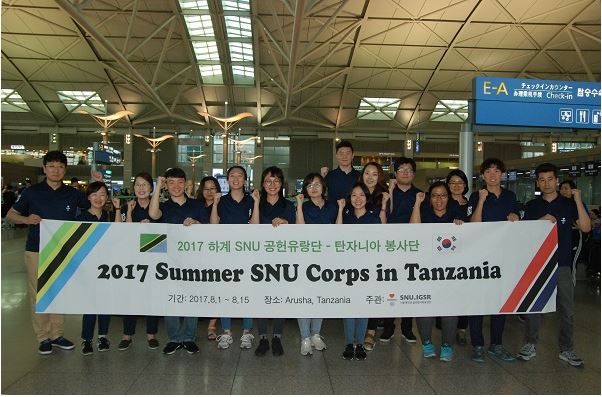500 Tanzanians trapped in
darkness rescued at last
A solar power plant
By Tranquility News Correspondent, Moshi
Nelson Mandela African Institute
of Science and Technology (NM-AIST) has, in collaboration with South Korea’s
innovation Technology and Energy Centre (iTEC), supplied solar power free of
charge to over 500 villagers at Mkalama in Masama Ward, Hai District.
The 2016 Energy Access Situation
Report by the National Bureau of Statics and the Rural Energy Agency shows
Tanzania has a long way to go in provision of electricity, as 67.2 per cent of
its households go without the essential social service.
Residents in least national grid
electricity connected regions recourse to solar power in the East African
country with Lindi leading the list by 75.5 per cent, newly created Njombe 63.4
per cent, Mtwara 61.1 per cent, Katavi 57.6 per cent and Ruvuma 54.7 per cent.
Kilimanjaro Regional Commissioner
Anna Mghwira, who inaugurated the project with the capacity of generating 10KW,
called on the villagers to use the renewable energy for productive activities
in a bid to improve their living standards.
“I thank all those involved in
realising this project,” said the RC, stressing that the beneficiaries should
use the solar power effectively for the village to stand out of the rural crowd
stranded in darkness.
Ms Mghwira said the NM-AIST
and iTEC joint research has solved challenges facing villagers, directing the
district and village authorities to ensure other researchers operating in the
area emulate them.
UN Resident Coordinator and UNDP Resident
Representative for Tanzania Alvaro Rodriguez (centre) poses for a picture with
envoys of the Tanzania International Model United Nations during a conference
held at Nelson Mandela African Institute of Science and Technology (NM-AIST) in
Arusha last year. PHOTOS | AGENCIES
South Korea’s envoy to Tanzania
Song Geum-Young said the Asian country would extend the solar power supply
project to other villages in a bid to stimulate socio-economic growth in the
country.
“Water is life, a Tanzania’s
saying goes, but electricity is the light which radiates hope amid darkness,”
the envoy said, congratulating the villagers for effectively taking part in the
pilot project.
Geum-Young said Tanzania and
South Korea have enjoyed cordial bilateral ties for quite a long time and that
Tanzania opened its embassy in Seoul in December last year to further cement
the relations and economic diplomacy, in particular.
Professor Sung-Hoon Ahn, the iTEC
head, explained that 5KW out of the total 10KW generated will be supplied to
villagers free of charge and that the remaining 5KW will belong to the village
authorities for them to establish productive activities required for sustaining
the project.
Prof Ahn said much as the
villagers engaged in cultivation of onions; iTEC is mulling over adding another
solar power plant tailor-made for an irrigation scheme.
Dr Esebia Nyari, a resident of
the village, said about 4,000 people reside in Mkalama, pleading with the
government to consider fast tracking its rural electrification programme for
the remaining villagers to also benefit from the reliable energy.
Residential solar panel systems
Of the Tanzania’s electrified
households, 74.9 per cent are electrified with grid, 24.7 per cent solar power
and the remaining 0.3 per cent individual sources such as small generators.
Grid electricity is more prevalent in
urban areas, where 96.4 per cent of the households with access to electricity
are connected to, compared to rural areas’ 34.5 per cent. Only about 3.4 per
cent of urban households with access to electricity get it from solar power
compared to 64.8 per cent of rural households.
The study also shows that the Dar es
Salaam Region has the lion’s share of households connected to electricity of
any form (75.2 per cent) followed by Njombe Region 50.5 per cent, Kilimanjaro
42.6 per cent and Katavi 40.0 per cent.
Regions, which are less than 20 per
cent connected to any form of electricity, include Rukwa 8.7 per cent, Simiyu
11.5 per cent, Shinyanga 12.8 per cent, Geita 14 per cent, Songwe 15.9 per cent
and Kigoma 16.2 per cent.
Dar es Salaam is the leading region with 99.3 per cent of its
households connected to the national grid electricity, followed by Kilimanjaro
88 per cent. Least connected regions to the grid electricity are Lindi 24.5 per
cent, Njombe 36.6 per cent, Mtwara 38.9 per cent and Katavi 41.1 per cent.
탄자니아에 스마트 태양광발전 센터 건설
·
최홍식 기자
· 승인 2018.02.02 17:01
한국-탄자니아 적정과학기술 거점센터(이하 iTEC)가 탄자니아 킬리만자로 주의 음칼라마 마을에 10kW급 태양광발전 센터를 건설했다고 서울대 공대가 발표했다.
서울대 iTEC-솔라봉사단, 태양광으로 농작물 가공
[Industry News 최홍식 기자] 이번에
태양광발전 센터가 건설된 음칼라마 마을은 적도 근처에 위치한 남위 3.4도, 해발 약 800미터의 오지로, 국가
전력망으로부터 위치가 멀어서 전기가 들어오지 않는 마을이다. iTEC에서 건설한 센터의 지붕에는
태양광 모듈이 설치돼 있어 50여 가구에 전기와 조명을 제공할 예정이다. 마사이 족 등으로 구성된 주민들은 센터에서 전기를 사용해 농작물을 가공하게 되며, 이를 통해 소득을 증가시키고 소규모 창업을 시도할 수 있는 기회를 제공한다.
또한, 아프리카
전기요금의 특징인 선불제를 구현하기 위해 서울대에서 개발한 스마트미터와 원격모니터링 및 원격제어를 운영하게 된다.
발전센터와 전시주,
가정 내부 배선과 조명 공사는 iTEC와 주민들, 그리고
국내의 서울대와 한양대, 건국대, 경상대, 우송대, 한국기술교육대, 해외의
미국 조지아공대, 시카고대, 넬슨만델라 아프리카과학기술원(NM-AIST)의 교수와 학생, 기업인 등 50여 명이 연합한 솔라봉사단이 진행했다.
솔라봉사단은 현지 초등학생 900여 명에게 과학교육은 물론 의사들과 함께 170여 명의 환자를 치료하기도 했다. 치과캠프에서는 서울대 기계공학
수업에서 개발한 치과드릴을 실제 환자들을 치료하는데 사용하며 그 효율성을 검증하기도 했다.
봉사단은
NM-AIST에서 탄자니아 학생들에게 무료강의를 진행했다. 서울대 공대가 3D CAD 아듀이노 교육을 실시했으며, 서울대 농생대가 농업기상관측기술을
건국대가 드론 교육을 진행했다.
태양광발전 센터 개소식에는 송금영 주 탄다니아 대사와
안나 음기위라 킬리만자로 주지사가 참석했다. 음기위라 주지사는 “태양광 등의 에너지는 농촌뿐만 아니라
킬리만자로 주의 산업 부흥에 매우 중요한 요소다”며 “한국과 협력해 에너지분야의 투자를 확대해 나갈 수 있기를 바란다”고 밝혔다.
Tag#탄자니아#탄자니아태양광#태양광#태양광발전센터#서울대학교#솔라봉사단
저작권자 ⓒ 인더스트리뉴스 무단전재 및 재배포 금지
출처 : 인더스트리뉴스
492 | 05-02-2018
